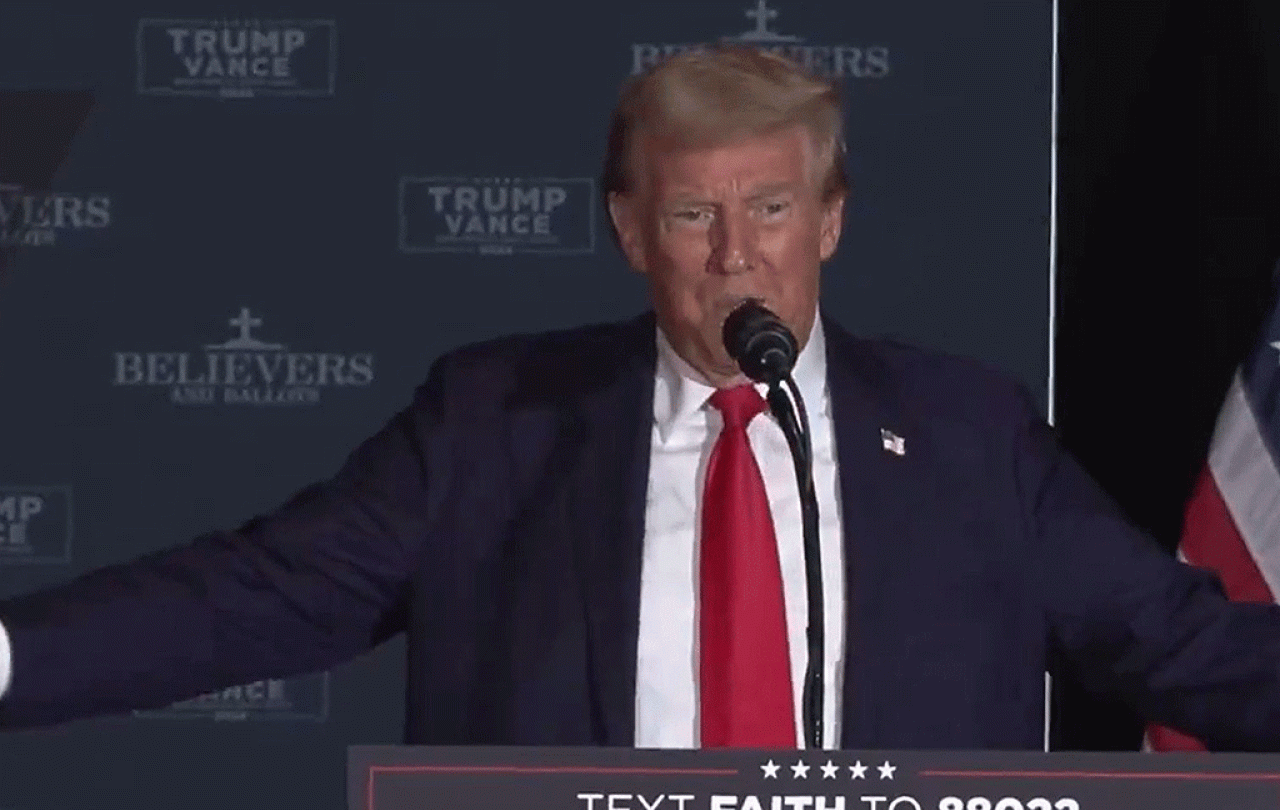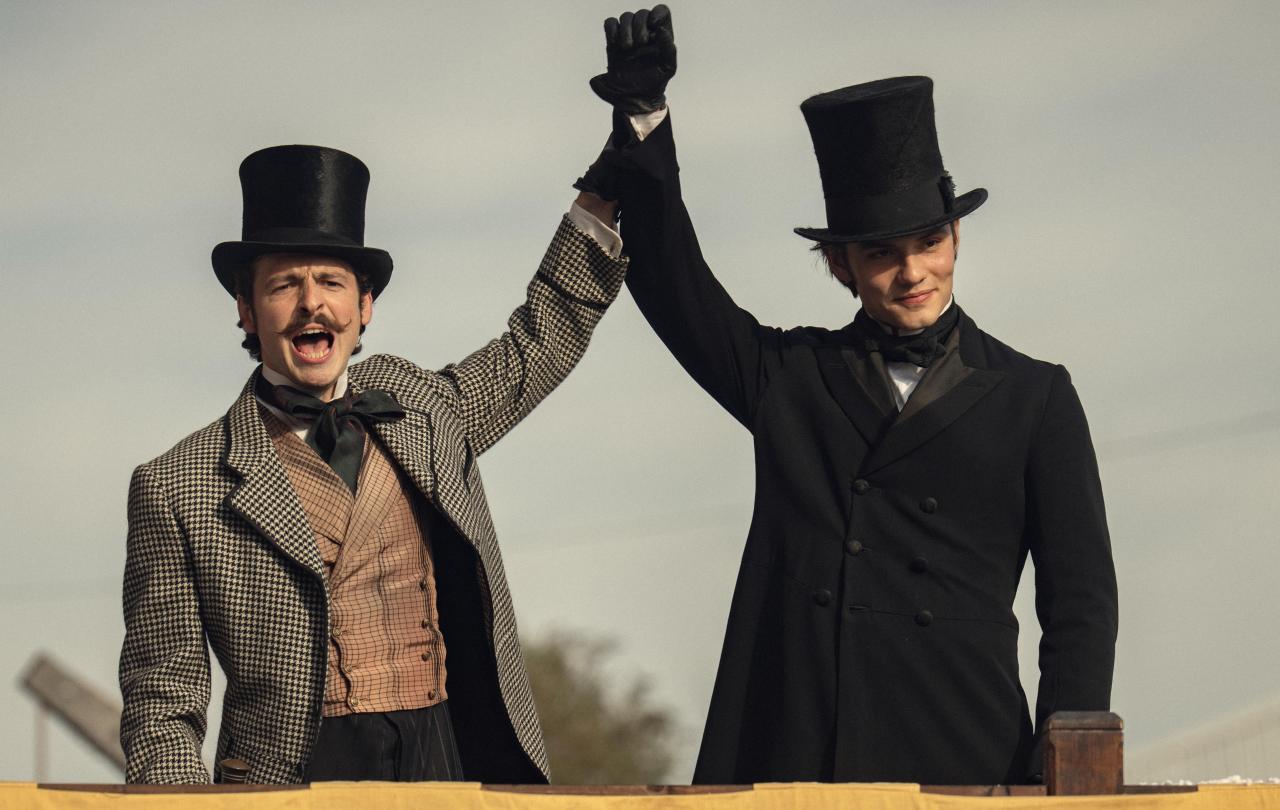
Coverage of the Republican candidate for Vice-President, J.D. Vance can't help but return again and again to his Christian intellectual influences. Whether it's an interview with Rod Dreher or an analysis of Patrick Deneen and other 'New Right' thinkers, many US political journalists are having to give their readers a crash course in some of the most controversial ideas in contemporary theology. One recent Politico article stands out because it didn't just introduce an unsuspecting audience of political obsessives to an obscure theologian, it also told them (us) about contradictory ways one might read said obscure theologian. And yet these contradictions force us to confront a difficulty facing anyone engaged in democratic debate.
In the article , Ian Ward sought to explore the impact of Rene Girard's scapegoat mechanism on Vance. In doing so, Ward underlines the importance of Girard's ideas in the intellectual circles around J.D. Vance and his mentor, Peter Thiel.
Girard, a French academic who died in 2015, is remembered foremost for his analysis of the relation between desire and conflict. Girard proposes that desire is ‘memetic, that is to say, it mimics; I want what I see that others want. This naturally leads to conflict, a conflict that can only be resolved by a scapegoat. Identifying a scapegoat, an out-group, is a force powerful enough to create a sense of solidarity between those would otherwise be in conflict over shared desires.
The Politico take considered how Vance's reading of Girard might relate to Vance's defence of his running mate's false suggestion that Haitian immigrants are eating their neighbour's pets in Springfield, Ohio. It went as far to suggest that—rather than a rejection of Girard's analysis— Vance could be understood to be applying a pragmatic reading of Girard. Ward writes:
Though Girard never said so outright, some of his interpreters have argued that Girard’s idea of the Christian ethic — which in theory offers an alternative to ritualistic violence as a basis for social cohesion — cannot in practice serve as the basis for a large, complex and modern society.
Scapegoating is inevitable, deploy it to your advantage. We cannot know how exactly this or any reading of Rene Girard factors into his political tactics. What we can know is that Vance's public fascination with big ideas opens him up to a charge upon which a healthy democracy depends: hypocrisy.
In contrast, there is often a surprising transparency to Trump's appeals to self-interest, Addressing a audience in July, Trump declared:
Christians, get out and vote, just this time. You won't have to do it anymore. Four more years, you know what, it will be fixed, it will be fine, you won't have to vote anymore, my beautiful Christians.
As much as Vance and others try to change this, there is little ideological content, no substance behind ‘Make America Great Again’ insofar as Trump tells it. It is politics at its most transactional and what Trump offer his supporters, beautiful or otherwise, is so often a scapegoat. Trump tends to be pretty open about this and, as ugly as this kind of politics is, there is a strange kind of honesty to it. But Vance is different. He has big ideas. And however weird you may think these ideas are, and however much tension there seems to be between his love of Rene Girard and his scapegoating of Haitian immigrants, democracy is better for that tension. Constructive democratic debate, in some sense, depends on hypocrisy. Without it, democracy would be nothing more than a negotiation around mere self-interest.
A politician with an ideological vision is one that can be held accountable. Keir Starmer's recent decision to pay back £6,000 worth of gifts is a case in point. Had he not sought to set himself as a contrast to the Boris Johnson of Partygate, the criticism of his accepting clothes and tickets would not have had the same bite.
Stumbling into politics haunted by a sense that things could be better will make us hypocrites on impact.
The first generations of Christians encountered a similar problem. The law they believed that they had received from God showed them a vision for the good life just as it revealed all the ways they fell short. As the early church leader Paul wrote: “through the Law comes the knowledge of sin.” We might add that through political ideology or aspiration comes the knowledge of political hypocrisy.
Had Vance never publicly explored Girard's theory, if he were only an opportunist more like Trump, we would have one less means by which to hold him to account. Every politician will be found lacking when judged by their public ideological aspirations. And the more ideological aspirations, the greater the charge of hypocrisy. Hypocrisy will always be found wherever we find people debating and aspiring to ideas more perfect than they are. I'm not defending any individual hypocrisy; the residents of Springfield, Ohio and newcomers across the US deserve so much better. Hypocrisy is always disappointing, but it is less disappointing than the alternatives: either a naked pursuit of self-interest or a naïve expectation of ideological purity.
The question for each of us in a democracy is how we live with hypocrisy, expecting it while still expecting more from those who wish to serve us in public office. And a moment's introspection reveals that it is a charge that confronts each of us also: the shaming gap between my aspirations for my life and the reality. To ask how we live with these hypocritical politicians is really to ask how we live with ourselves?
With that we return to Girard. He claimed that Jesus Christ willingly became a transparently innocent scapegoat and in doing so undermined the mechanism. In the Politico article, Vance is quoted as follows:
In Christ, we see our efforts to shift blame and our own inadequacies onto a victim for what they are: a moral failing, projected violently upon someone else. Christ is the scapegoat who reveals our imperfections, and forces us to look at our own flaws rather than blame our society’s chosen victims.
The exacting logic of the crucifixion prevents us from scapegoating even the scapegoating politicians.
But Jesus’ death is more than an embodied social critique. In coming to us and dying in the person of Jesus, God showed his love for imperfect people struggling under the weight of perfect ideas. He came to give the home and safety we all desire, offered freely to hypocrites. The point of Christ's death is not, at least in the first instance, to inspire me to treat others better. It is God's unconditioned offer to the broken and hypocritical, as the broken and hypocritical, not as he'd rather we be.
Paul puts it like this: "God demonstrates his own love for us in this: While we were still sinners, Christ died for us." Yes, God's grace is too dramatic, too strong not to provoke us and empower us to change, but his love comes to us before any change. It comes to us as we are, nursing our pitchforks and that self-righteous sense that it's all really someone else's fault.
Stumbling into politics haunted by a sense that things could be better will make us hypocrites on impact. We must not excuse this hypocrisy; we should hold ourselves and our leaders to account. And yet we can do so gratefully haunted and gratefully held by a God who came for hypocrites.





